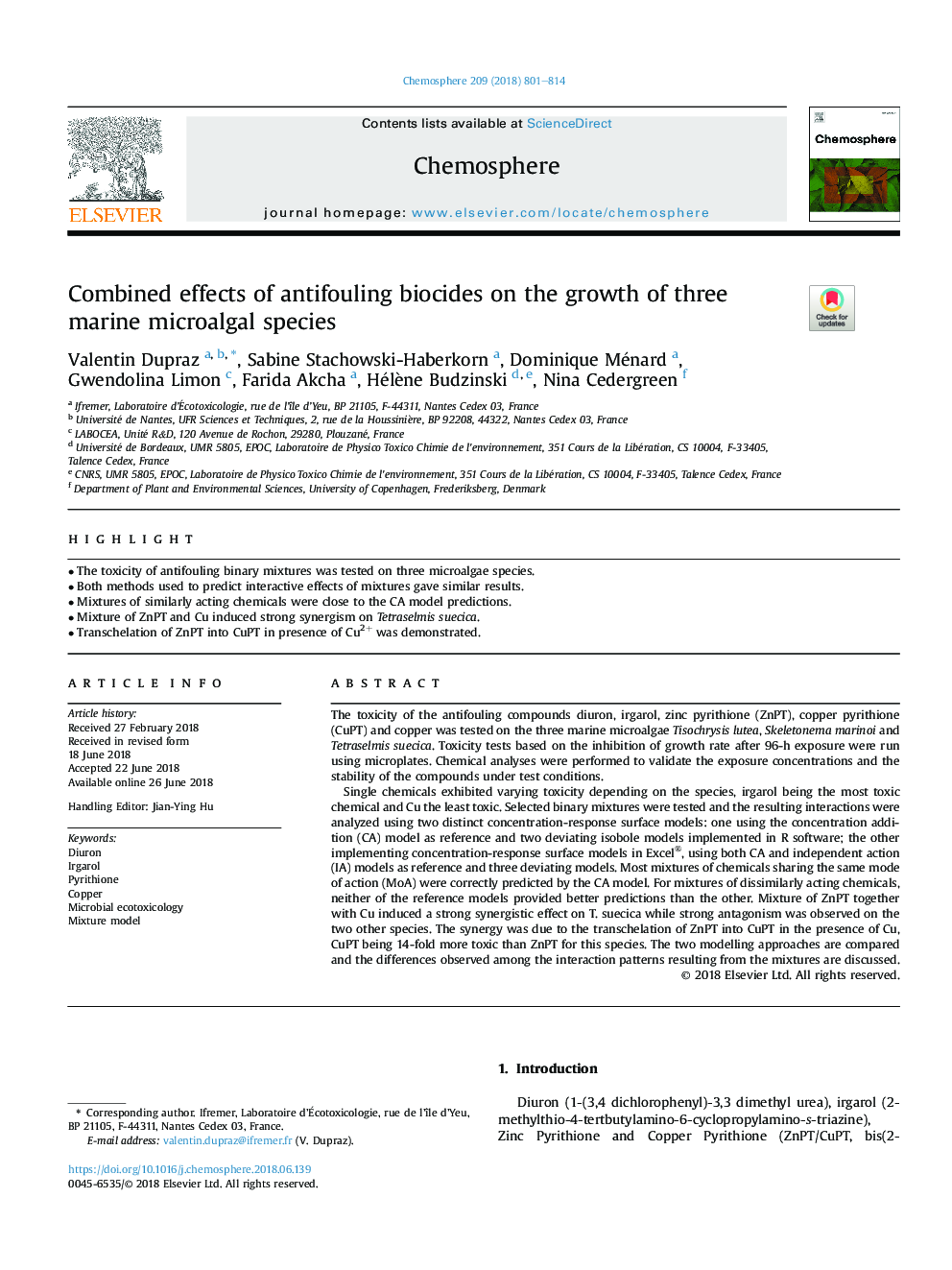| Article ID | Journal | Published Year | Pages | File Type |
|---|---|---|---|---|
| 8850596 | Chemosphere | 2018 | 14 Pages |
Abstract
Single chemicals exhibited varying toxicity depending on the species, irgarol being the most toxic chemical and Cu the least toxic. Selected binary mixtures were tested and the resulting interactions were analyzed using two distinct concentration-response surface models: one using the concentration addition (CA) model as reference and two deviating isobole models implemented in R software; the other implementing concentration-response surface models in Excel®, using both CA and independent action (IA) models as reference and three deviating models. Most mixtures of chemicals sharing the same mode of action (MoA) were correctly predicted by the CA model. For mixtures of dissimilarly acting chemicals, neither of the reference models provided better predictions than the other. Mixture of ZnPT together with Cu induced a strong synergistic effect on T. suecica while strong antagonism was observed on the two other species. The synergy was due to the transchelation of ZnPT into CuPT in the presence of Cu, CuPT being 14-fold more toxic than ZnPT for this species. The two modelling approaches are compared and the differences observed among the interaction patterns resulting from the mixtures are discussed.
Related Topics
Life Sciences
Environmental Science
Environmental Chemistry
Authors
Valentin Dupraz, Sabine Stachowski-Haberkorn, Dominique Ménard, Gwendolina Limon, Farida Akcha, Hélène Budzinski, Nina Cedergreen,
